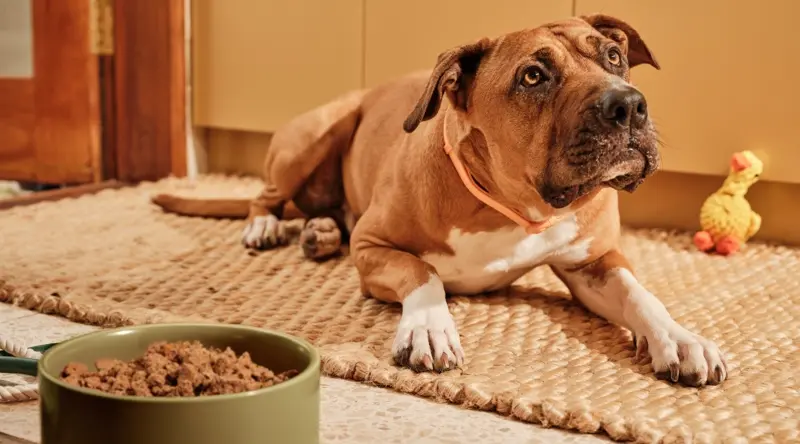Fussy eating often occurs when dogs transition between different foods, but some pups can develop fussiness even when they’ve been happily tucking into their meals for a while.
The underlying cause of picky eating may be as simple as boredom with the routine and a repetitive diet. Thankfully, these can be easily adjusted.
If your dog has started to show signs of fussiness, we’ve got some tried and tested techniques crowd-sourced from our community to get your dog back on track and their heads back in the bowl in no time.
The food refusers: Teddy and Rufus
When Teddy and Rufus started to refuse their meals, their fur mama, Kristina, spoke to our Lyka Customer Care team for advice. With their help and guidance, she explored different tactics to find the perfect combination to get her boys munching again.
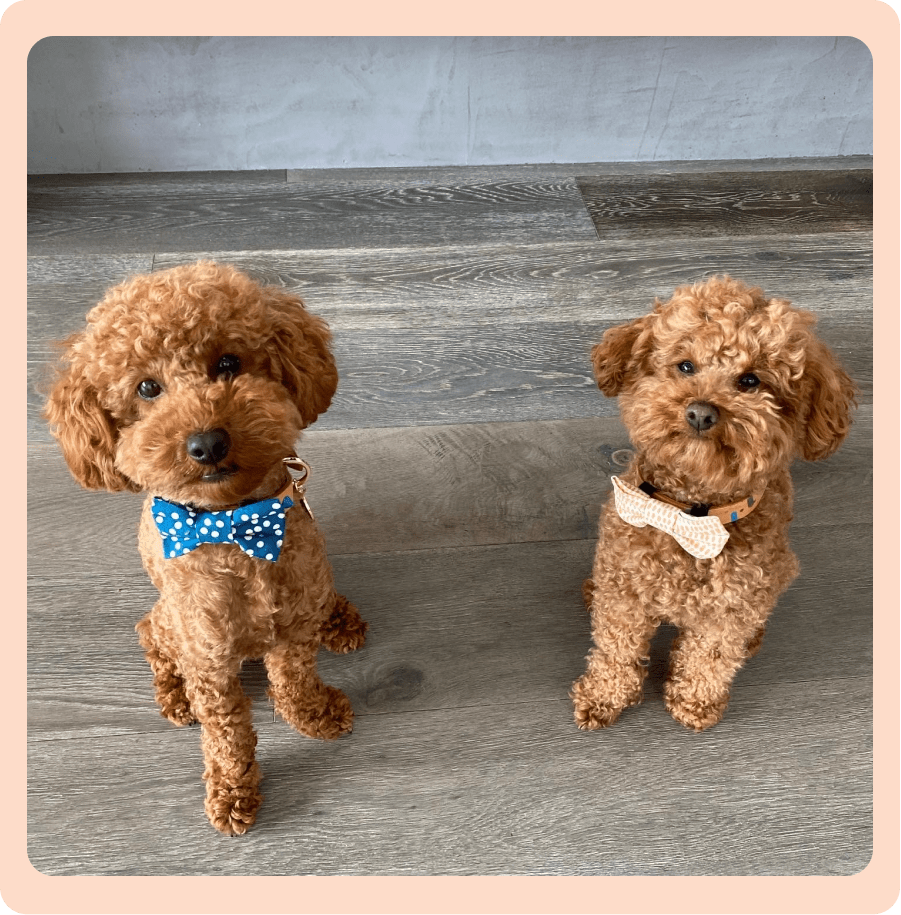
Successful strategies for enthusiastic eaters
Removing or reducing the treats. If you’re feeding your pup too many treats and tidbits throughout the day, their appetite will be reduced at mealtimes. Treats are designed to be delicious and high-value, which may mean your pup desires the taste of a treat over a nutritious meal. We know your pup may not be too happy about this, but try not to exceed more than 10% of their daily calorie intake as treats.
Choose your pup’s preference. Each dog has their own unique palette and will prefer some dishes over others. Minimise the issue of fussiness by selecting the recipes you know they will enjoy.
Establish a regular routine. Establish a mealtime routine so that your dog learns when to expect their food to be served.
Offer a short feeding window. If you leave bowls of food out for a long period of time, it gives your dog the opportunity to refuse it. If they know the food is only available for a short while, they are more likely to eat it. If they’re genuinely not hungry or don’t want to eat, return the bowl to the fridge and try again when their next meal is due. Keep meals fresh and delicious by making them available for no more than 10-15 minutes. Any longer than that and it can become stale and you risk the growth of potentially harmful bacteria.
Hand-feed your pup. Try tempting your dog with small portions of food from your hand. The interaction with you will encourage them to eat. Kind of like a delicious game!
Add tasty toppers. Make their meals more interesting by adding toppers to their dishes. The new tastes, textures and smells will make their food more appealing, not to mention the extra nutrients are great for their insides.
Use a slow-feeding mat. These textured feeders are not just for dogs that devour their food in seconds, they’re also a great way to reduce anxiety and improve digestion. Interactive eating toys and licking mats make mealtimes more of an experience and less of a necessary chore.
Heat it up. Tempt your pup’s taste buds by heating up their food to release the drool-worthy aromas of their fresh food.
Separate the dogs. Food can create a territorial issue, which can make dinnertime stressful. If you have more than one dog, separate their feeding stations so that they can enjoy their food without having to guard it.
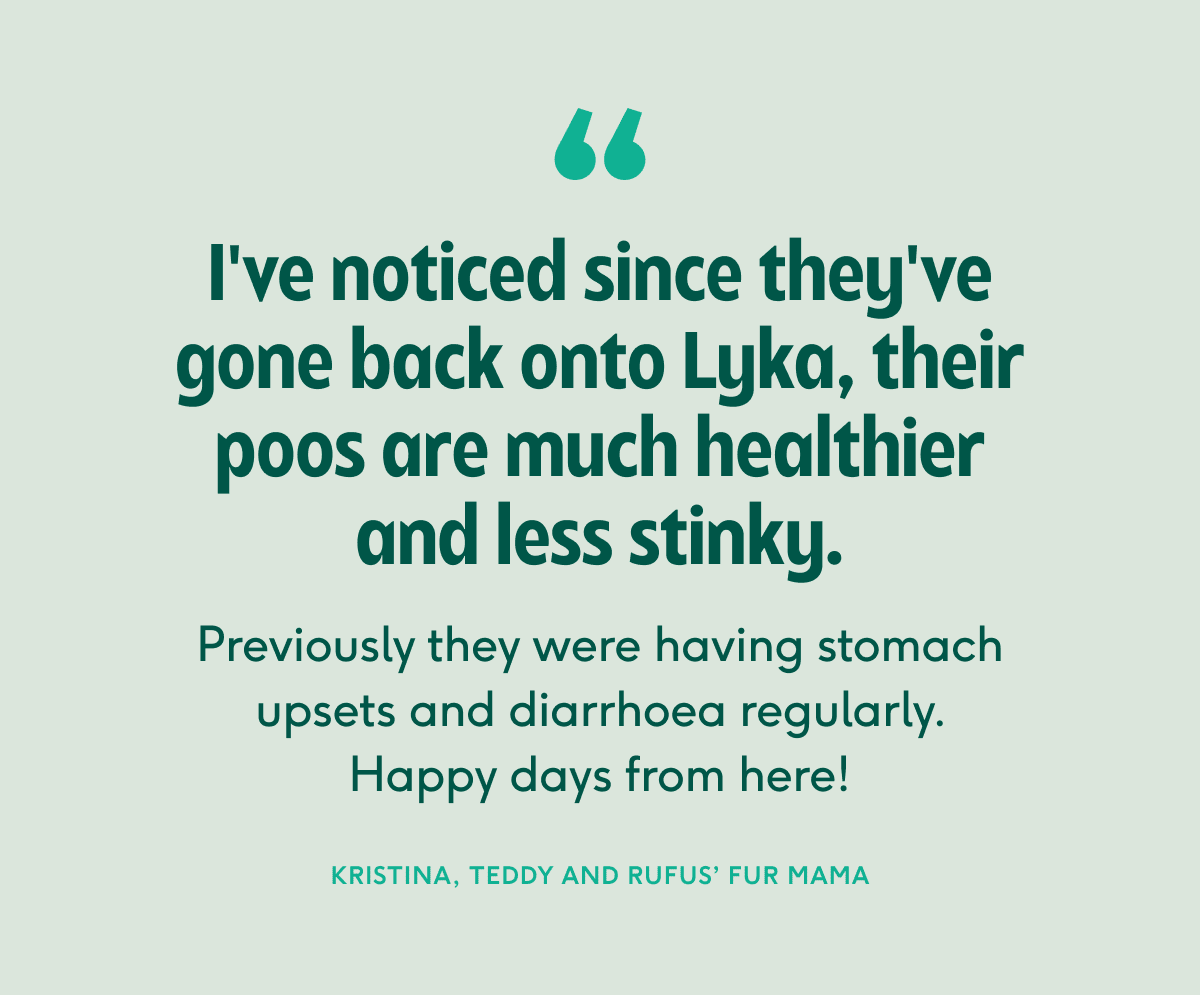
Leo the finicky foodie
Little Leo has always been rather fussy with his food, but his fur mama, Julie really wanted him to continue benefiting from eating Lyka’s complete and balanced meals. So, she reached out to our Customer Care team for some advice.
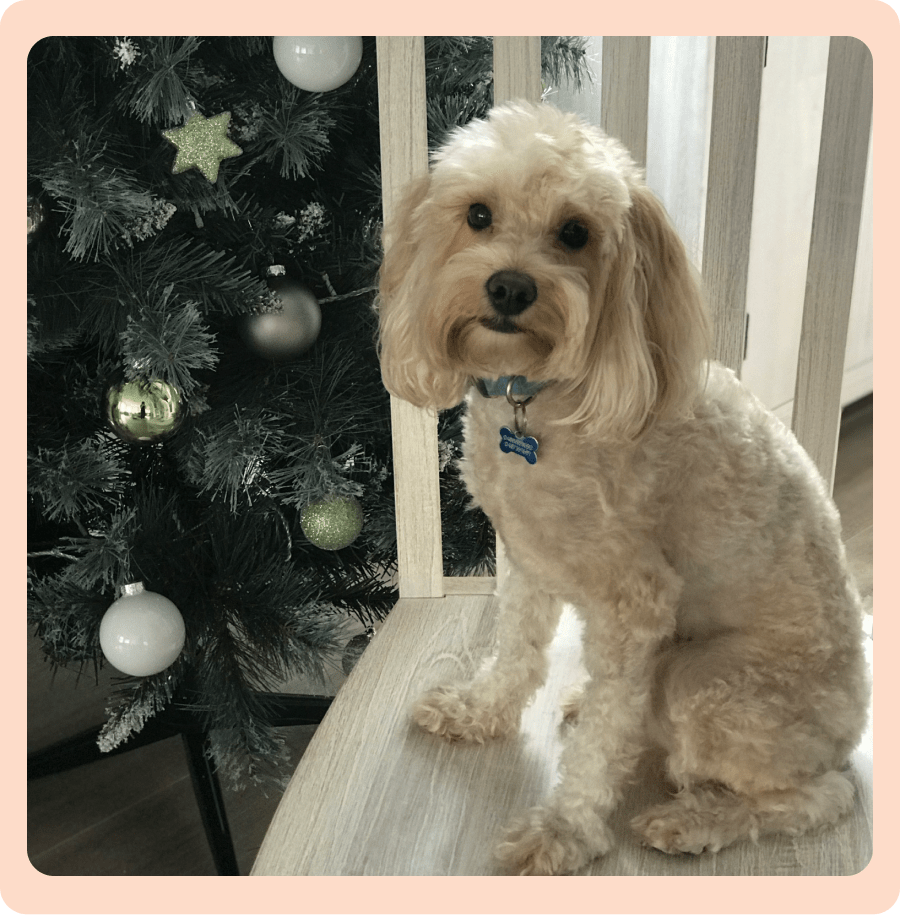
After reading the helpful tips from a Lyka fact sheet, I tried a couple of things that seemed to help.
Julie, Leo’s Fur Mama
Top tips for fussy eaters
Alternate the recipes. To keep mealtime interesting, feed your dog different dishes each day to give them variety. You can try popping the pouch in a bowl of warm water to release the aromas and tempt their taste buds!
Provide privacy. Some pups can be easily distracted and lose their focus on their food. Try feeding your pup in a quieter, more private area of the house.
Tangy’s sensitive tummy troubles
It’s been a bit of a rough ride for Tangy recently. She’s always had a sensitive stomach, but her sensitivity worsened following chemotherapy. On top of that, she caught a tummy bug. Poor Tangy was very unwell with vomiting and diarrhoea.
Fur mama, Annie, consulted with the Lyka team and with Tangy’s holistic vet and Lyka co-founder, Dr. Matthew Muir, who advised her to focus on the food that she could stomach. Annie started with the Rip Rollickin’ Kangaroo Bowl, which is low-fat and highly digestible. A great option for many pups!
The slow and steady solution
Identify the problem. Work with your vet to identify the ingredient that triggers your dog’s digestive problems, if you suspect they suffer from a food intolerance. An elimination diet may be advised, which includes feeding your pup a novel protein, like Kangaroo, then slowly reintroducing other ingredients to find the one that’s causing the problem.
Avoid food aversion: If your pup has been ill with vomiting or diarrhoea, reintroduce food slowly. It’s important they don’t develop a food aversion, which associates food with a time when they were unwell.
You can feed your dog smaller portions throughout the day, rather than one or two big ones. Slowly increase this each day until they are back to their normal routine. It may take some time, so be patient. Avoid introducing new food or a new diet during this time, too.
Rebalance the microbiome: Sickness can affect the bacteria in the gut leading to an unbalanced microbiota (dysbiosis), which can actually lead to fussiness. Lyka’s fresh food diet is rich in prebiotics and probiotics, and designed to support a healthy microbiome. Our Go-To Gut Helper also adds good bacteria to improve the balance of your dog’s gut.
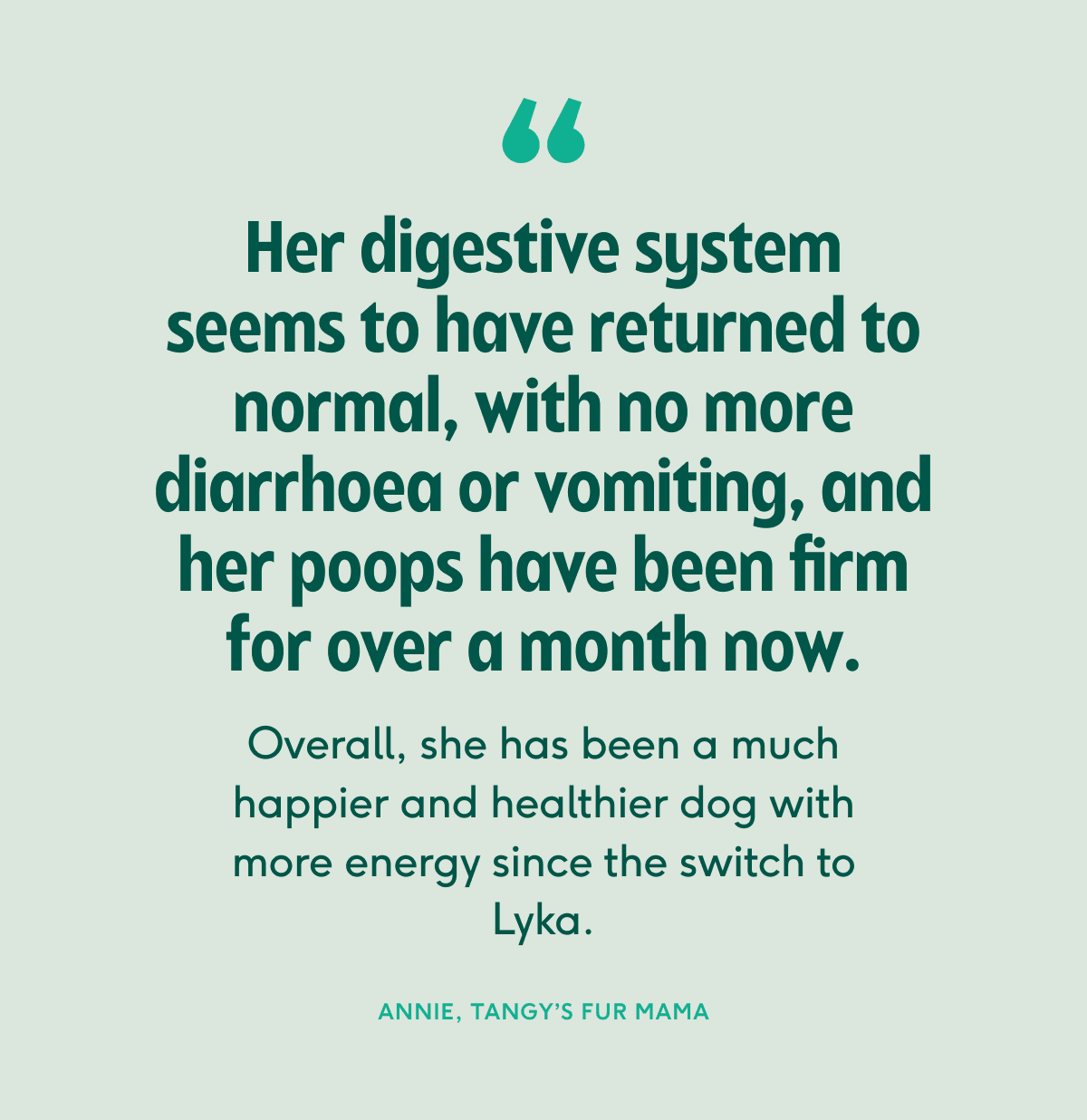
The soft poop problem
Pupper parent, Sharon, has a pack of three gorgeous dogs that all enjoyed chowing down on their nourishing Lyka dishes. Then all of a sudden they all started to have very soft poops — often an indication that something was not quite right.
Sharon decided to cook her own dog food, but the problem continued, which was perplexing. After further investigation and extra testing at her vets, she discovered that all three pups had clostridium, a common bacteria that could have been picked up at the dog park.
Expert advice is the answer
There are many causes of diarrhoea, including bacterial infection, stress, eating food they shouldn’t and other environmental triggers. Some causes can pass through your dog’s system quickly, while others, like clostridium, require medical intervention from the vet.
Don’t ditch the diet. In our experience, dogs on a Lyka diet have smaller, firmer poops because the nutrients have been absorbed into their system. It can be easy to blame food for digestive problems, but it’s always advisable to speak to your vet if you have any concerns about your dog’s health, especially if you’ve noticed a change in their normal wellbeing.
Support and advice from our Lyka experts
Each of our complete and balanced meals is brimming with delicious and nutritious ingredients to satisfy even the pickiest of eaters.
Our Customer Care team is ready to answer your questions about transitioning to Lyka, as well as any diet or nutrition queries, and provide you with helpful strategies to support your dog’s health and wellbeing.
Got a question? Let us know and contact Customer Care today!
)
)
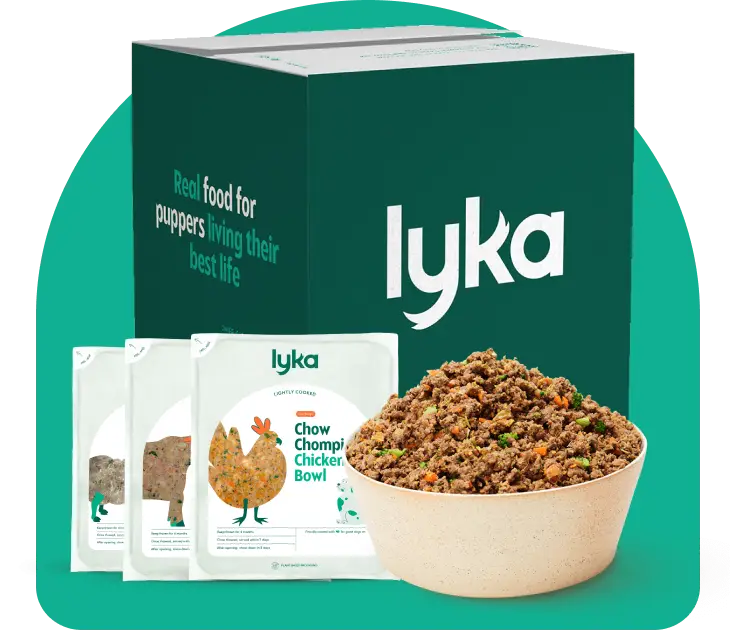
)
)
)
)
